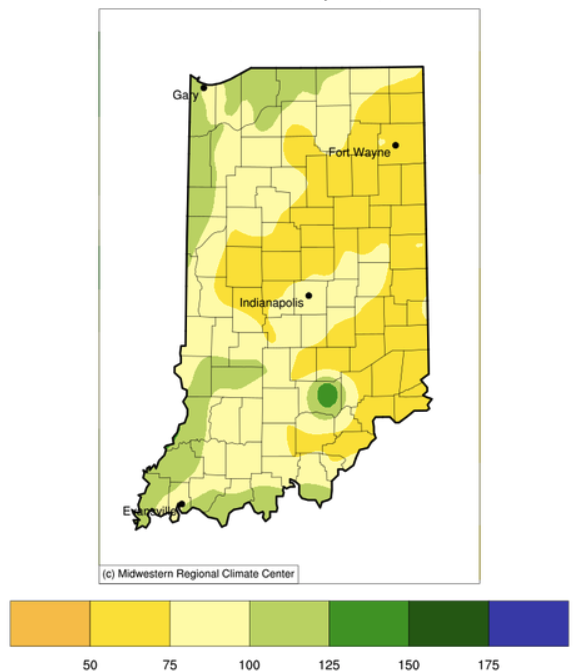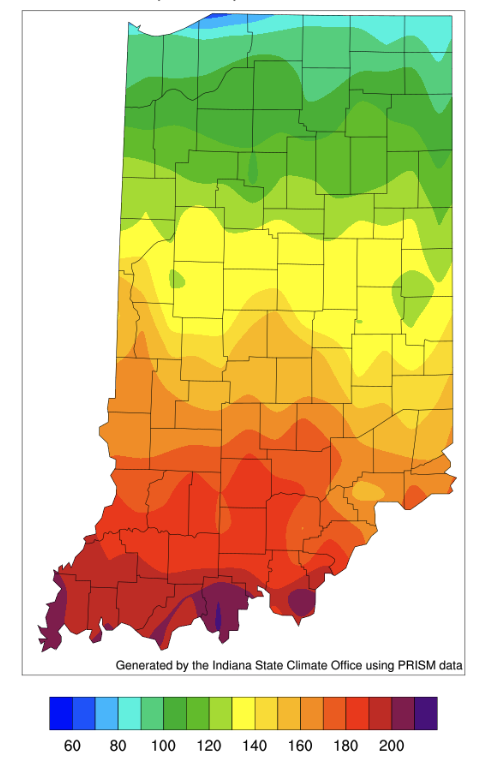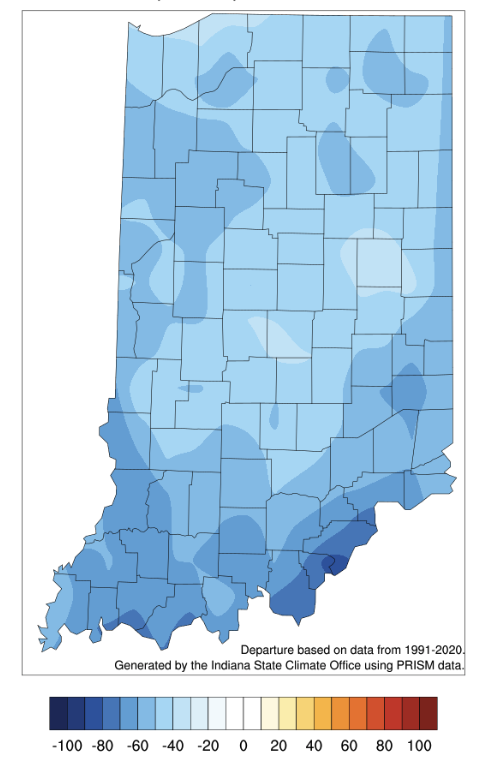It seems to be a big challenge these days to find two or more consecutive days without precipitation. What is interesting is the precipitation isn’t always coming in great amounts, but enough to impact any outdoor plans. For example, will it be dry enough for enough days to justify dragging out all those patio cushions? When would be a good time to apply patio sealer if the label recommends 48 hours of dry conditions? Will be ground be dry enough this weekend to plan an outdoor social activity? While it seems it has been raining most every day, Indiana is starting to show signs of a precipitation deficit. Figure 1 shows the amount of precipitation received over the past 30 days represented as the percentage of the 30-year normal amount for that same period. Ignoring that green bullseye in Jackson County (likely an erroneous data value), most of the state has received less than the average amount. Eastern and central Indiana counties have only received 50% to 75% of the normal amount of precipitation. Interestingly, we are not seeing serious impacts yet from abnormally dry our even drought conditions primarily due to the cooler temperatures. Lower temperatures reduce the rate of evapotranspiration so what precipitation has fallen has been keep soil moisture levels near normal as well as surface streams and ground water supplies. However, as temperatures increase and vegetation begins to flourish, conditions may change so be aware and prepare in advance for potential moisture stress.
Average temperatures over the past 30 days have been around 2 degrees below normal, causing accumulated growing degree days to lag behind the climatological average for this time of year. Figures 2 and 3 show accumulations since April 1st along with the departure from the climatological departure. The 8-14-day outlooks (for May 5-11, 2022) are favoring cooler-than-normal temperatures with near-normal precipitation amounts. The climatological normal amount of precipitation for this period ranges from 0.75-1.5 inches with maximum daily temperatures ranging between 70°F to 80°F.

Figure 1. Total precipitation from May 30, 2022 through April 28, 2022 represented as a percentage of the 1991-2020 climate normal amount for the same period.




